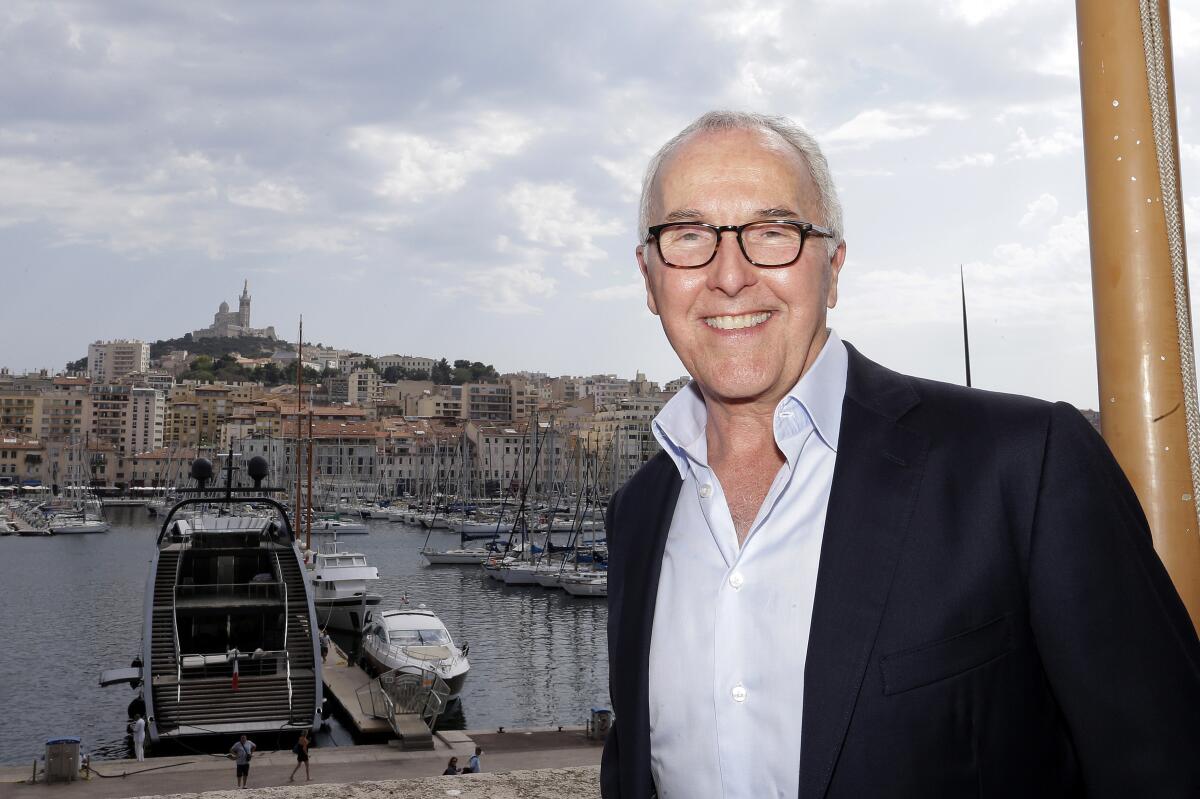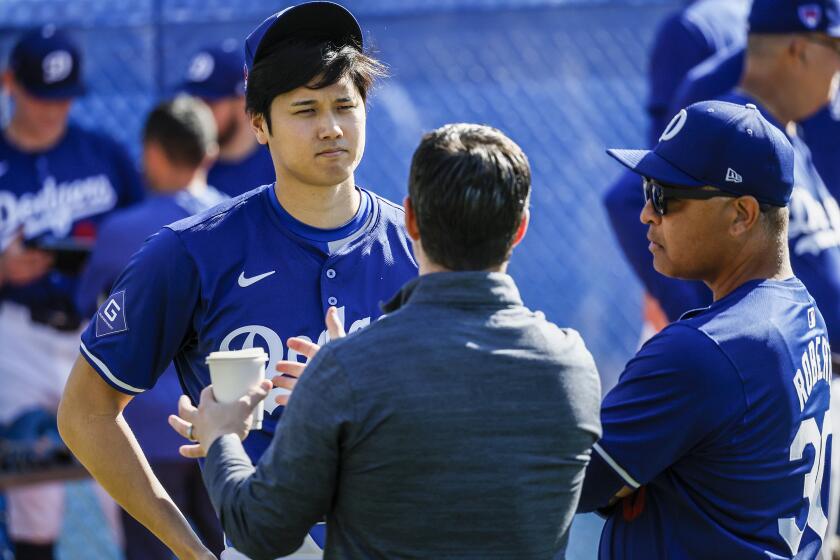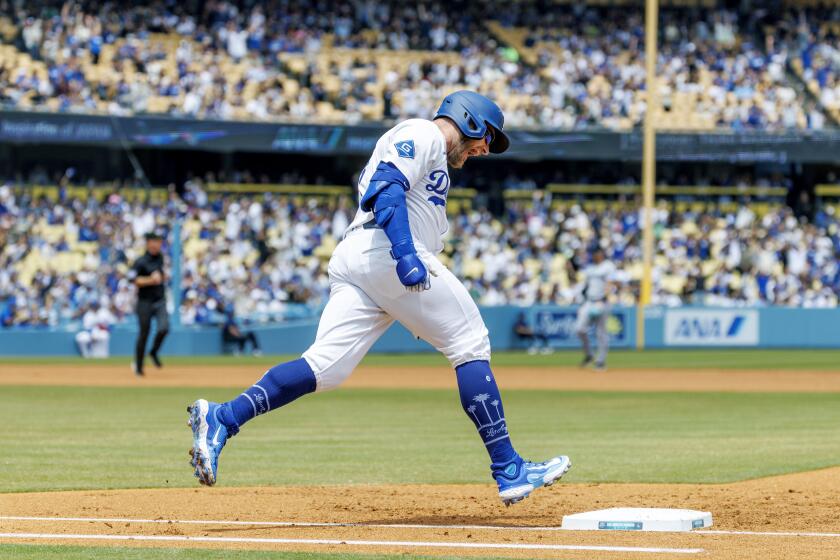Affordable housing demand could derail Dodger Stadium gondola project

- Share via
In 2018, when former Dodgers owner Frank McCourt first pitched the concept of a gondola from Union Station to Dodger Stadium, then-mayor Eric Garcetti said he was “absolutely confident that this will happen.” Karen Bass replaced Garcetti as mayor 14 months ago, and she had said nothing about the gondola project.
Until Saturday, that is.
The mayor and four allies on the Metro board issued a list of 31 conditions they want to impose in order to proceed with the project, including a plan for a regional bus program that could compete with the gondola for riders and a restriction on future development of the Dodger Stadium parking lots, which could drag the Dodgers themselves into the approval process.
Shaikin: A $300-million (minimum) gondola to Dodger Stadium? Why is Frank McCourt really pushing it?
Former Dodgers owner Frank McCourt is hoping his Dodger Stadium gondola project will become a reality, but his proposal is meeting stiff resistance.
Bass and her allies, including county supervisor Hilda Solis, account for five votes on the Metro board. They would need two of the other eight votes to impose the conditions, which are expected to be discussed at a board meeting Thursday.
Nathan Click, spokesman for Zero Emissions Transit (ZET), said gondola project officials “are reviewing” the list of conditions. ZET is the nonprofit established to oversee the project.
The list addresses several major issues raised by project opponents, including: the lack of guarantees that taxpayers would not be liable for what is proposed as a privately funded project; allegedly insufficient consideration of alternatives to improve access to Dodger Stadium; and concerns that a gondola to the Dodger Stadium parking lots inevitably would lead to development of those lots, co-owned by McCourt.
Project proponents say bonds, sponsorships and naming rights could pay for the gondola, with costs estimated at up to $500 million for construction and up to $10 million per year for operation. Bass and her allies want ZET to set aside a pool of money to ensure “there are sufficient funds available to dismantle or operate the project” if necessary.
Bass also wants ZET to pay for whatever buses Metro might need to run to Dodger Stadium during the 2028 Olympic Games if the gondola is not up and running at that time. The gondola is projected to open in time for the Games.

The conditions also include “the addition of multiple, regionwide park-and-ride locations consistent with the model provided by the Park & Ride Hollywood Bowl shuttle program.”
A program that takes riders directly to Dodger Stadium, without a stop at Union Station to catch the gondola, would be a competitor for the gondola. A program that takes riders to Union Station, alleviating the need to drive there and find parking before catching the gondola, might be an alternative.
While proponents have pitched the gondola as strictly a transit project and said any future development of the Dodger Stadium parking lots would require city approval, Bass wants a binding commitment that at least 25% of any development would be dedicated to affordable housing.
Shohei Ohtani is ahead of schedule in his recovery from Tommy John surgery. And even in a routine Dodgers batting practice Friday, he still put on a show.
McCourt could not on his own agree to such a commitment. He and the Dodgers share ownership of the parking lots. Team president Stan Kasten did not return a message asking whether anyone had discussed this proposed commitment with the Dodgers.
In a state starved for housing, California’s other major league teams have included homes within projects surrounding their ballparks. Although proposals in Anaheim and Oakland collapsed, ballparks in San Diego and San Francisco now include adjacent housing.
In San Francisco, the Giants agreed that their Mission Rock neighborhood would include about 1,200 residences, with 40% reserved for affordable housing.
More to Read
Are you a true-blue fan?
Get our Dodgers Dugout newsletter for insights, news and much more.
You may occasionally receive promotional content from the Los Angeles Times.












